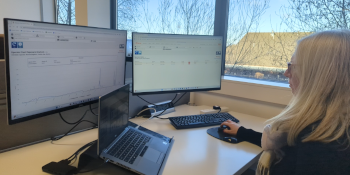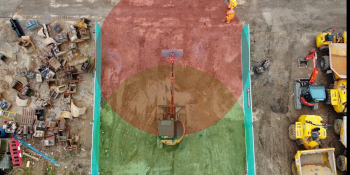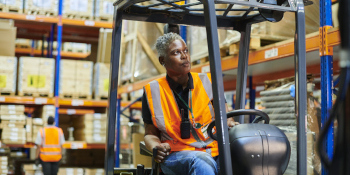Traditional economics: predictions and patterns1
In traditional economics, a leading indicator is recognised as any information that is used to predict an event or trend. Leading indicators are important forecasting tools for a number of reasons, an example of which concerns supply chain management: if more residential construction projects begin, builders and contractors can reasonably expect demand for their materials and resources to go up. If less residential housing construction begins, builders and contractors might expect tougher economic conditions.
In this example, the “housing start” (the new residential construction) is the leading indicator, and it provides a clear signal for what’s to come to anyone operating within a certain economic ecosystem. And based on the insight gathered from this leading indicator, economically dependent or economically related parties can take certain actions to prevent or mitigate harm that they might incur as a result of a negative leading indicator (i.e., less housing starts).
Said simply: businesses and individuals have historically evaluated meaningful data and used it to determine their best plan of action moving forward. To put it another way: leading indicators are one way that economists or businesses try to predict the future.
Naturally, this type of action sits in direct opposition to the use of data to confirm an event or trend once it’s already in motion. When an individual or a business uses information to confirm patterns or evaluate progress, that insight is called a lagging indicator - lagging indicators can only be evaluated after an event has taken place. Universally recognised lagging indicators include statistics like unemployment rates, revenue, and inflation.
Both leading and lagging indicators are understood to have value - one helps to inform actions moving forward, and one can be helpful in understanding progress or performance - but it’s generally appreciated that leading indicators are more valuable to individual business and organisations, because they’re more likely to be dynamic, and immediately actionable.
Technology: leading the health and safety industry forward
Within the health and safety space, leading and lagging indicators are similarly understood: leading indicators typically include positive, proactive steps - such as enhanced communication or optimisation of processes - that can help prevent harm to workers’ health, safety, or wellbeing. Lagging indicators, on the other hand, include data about health and safety in the workplace, such as accident frequency rates.
In the health and safety space, it is largely lagging indicators that are evaluated when organisations evaluate their internal processes with regards to health and safety. Firms often look at information about injuries, reportable incidents, accidents, fines, lost time away from work, and - worst of all - deaths, when forming their action plans or refining their controls. And while there are myriad of factors that contribute to such numbers, the fact is that here in the UK - even with our strong global reputation for health and safety initiatives - approximately 100 people are killed at work each year and a further 12,000 people die every year from work health-related deaths.
But it doesn’t need to be this way.
While the health and safety sector is often considered as ‘behind’ when it comes to adopting and utilising technology, the reality is that there is an advanced, comprehensive universe of digital products that exists to support the industry and its workers, and their adoption is not only relatively easy, but also incredibly cost-effective.
Reactec’s ecosystem of workplace wearables is designed to be accessible, straightforward and - crucially - immediately useful. The technology, which monitors workers’ exposure to risk from sources such as vibration, noise, dust, and proximity to hazards, is powered by a built-for-purpose analytics platform which provides insight that workers and duty holders can use to adjust behaviours in real-time and meaningfully inform action plans moving forward.
This kind of technology is designed to function as a leading indicator - it provides data and insight that an organisation can use to reliably predict future events, behaviour, or trends. It’s technology that can be used to help prevent harm, not just respond to it once it’s occurred.
Looking to the future
Leading indicators - any tools that can be used to inform decisions and avoid poor outcomes - are those that should be prioritised when it comes to the health, safety, and wellbeing of workers. Lagging indicators still have their place, of course, and should be used to critically interrogate the effectiveness of any refined controls or new processes: has our workers’ exposure to vibration reduced or stabilised? Are we seeing less ill health and injury? After all, we’re able to draw the most meaningful information when both of these indicators are working together and informing one another.
And while both leading and lagging indicators are rooted in economics - the study of the goods and services that we can see and touch all around us - there’s a question that goes to the heart of this conversation that’s distinctly metaphysical:
If you had access to something that could help you better predict the future, wouldn’t you want to use it?
---------------------------------------------------------------------------------------------------------------------
1 https://www.discoveringsafety.com/works/leading-indicators-health-and-safety-performance-assessment-project












